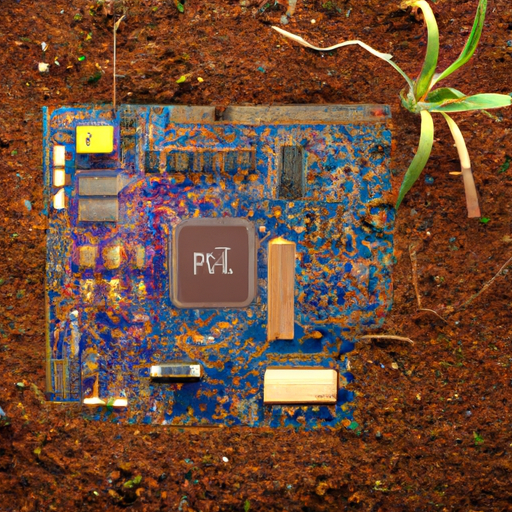Scientists have developed groundbreaking biodegradable electronic components that naturally decompose after use. These innovations could revolutionize how we handle electronic waste, which currently amounts to 50 million tons annually. The new technology combines organic materials with traditional electronics to create sustainable alternatives to common devices.

In an era where electronic devices have become integral to our daily lives, the mounting challenge of electronic waste has reached critical levels. However, a revolutionary breakthrough in biodegradable electronics is offering a promising solution to this global environmental crisis, fundamentally changing how we approach the lifecycle of electronic devices.
The concept of biodegradable electronics represents a paradigm shift in how we design and manufacture electronic components. Traditional electronics rely heavily on non-degradable materials like plastics, metals, and toxic substances that persist in the environment for centuries. The new approach involves creating functional electronic components that can naturally decompose under specific conditions, leaving behind minimal environmental impact.
At the heart of this innovation are organic semiconductors and conductors derived from natural materials. Scientists have successfully developed transistors using modified cellulose, organic semiconductors from plant derivatives, and conductive materials from carbon-based compounds. These components can perform comparably to their conventional counterparts while being completely biodegradable.
One of the most significant achievements has been the development of biodegradable batteries. These power sources use organic electrodes and naturally derived electrolytes that break down safely in the environment. Some versions utilize bacteria-based systems that not only generate power but also assist in the decomposition process once the device reaches end-of-life.
The applications for biodegradable electronics are vast and growing. In medical technology, biodegradable sensors and monitors can be used for temporary diagnostic purposes, naturally dissolving in the body after their function is complete. This eliminates the need for removal surgery and reduces the risk of complications.
Environmental monitoring is another crucial application. Biodegradable sensors can be deployed in large numbers to track pollution, soil conditions, or wildlife movements, decomposing naturally after their mission is complete instead of contributing to environmental waste.
The technology extends to consumer electronics as well. Researchers have developed prototypes of biodegradable display screens, circuit boards, and even simple computing devices. While these may not yet match the performance of traditional electronics, they represent a crucial step toward more sustainable consumer technology.
The decomposition process itself is carefully controlled. Most biodegradable electronics are designed to maintain stability during their operational lifetime but begin breaking down under specific environmental conditions, such as exposure to certain chemicals, bacteria, or enzymatic processes. This ensures reliability during use while guaranteeing eventual decomposition.
The environmental impact of this technology cannot be overstated. Current electronic waste contains numerous toxic materials that leach into soil and water systems, causing long-term environmental damage. Biodegradable electronics naturally break down into non-toxic components, some of which can even provide nutrients to soil microorganisms.
Manufacturing processes for biodegradable electronics are also becoming more sustainable. New techniques allow for production using less energy and fewer toxic chemicals than traditional electronics manufacturing. Some processes even utilize biological systems, such as engineered bacteria, to create electronic components.
The economic implications of this technology are significant. While current production costs are higher than traditional electronics, scaling up manufacturing and continued research are expected to make biodegradable electronics increasingly cost-competitive. The reduced environmental impact and waste management costs provide additional economic benefits.
Regulatory frameworks are beginning to adapt to support this innovation. Several countries have introduced legislation promoting the development and adoption of biodegradable electronics, including tax incentives for manufacturers and requirements for biodegradable components in certain applications.
Looking forward, the potential for biodegradable electronics continues to expand. Research is ongoing into more complex applications, including flexible displays, advanced sensors, and even biodegradable smartphones. The goal is to create a future where electronic devices leave no lasting environmental footprint.
As this technology matures, it promises to revolutionize our relationship with electronic devices, creating a more sustainable approach to technological advancement. The rise of biodegradable electronics represents not just a technical achievement, but a fundamental shift toward more environmentally conscious innovation in the digital age.



